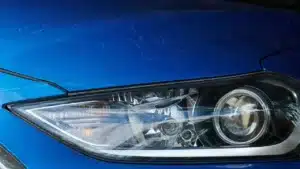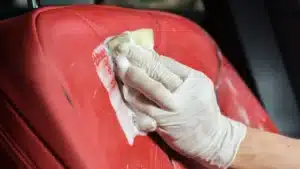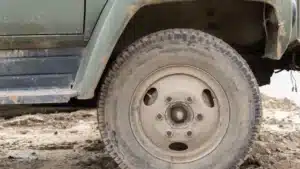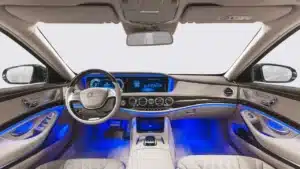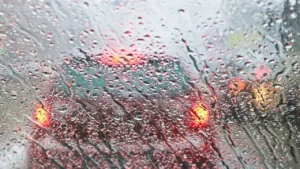If you’re like most people, you take pride in the appearance of your car. This means having regular maintenance performed on it, taking it through the car wash periodically, and applying wax a few times a year to keep the paint looking glossy and new.
But if you’ve owned your car for a long time, there’s a chance Mother Nature has played a toll on it with her harsh UV light or extreme weather conditions, eventually causing some of the clear coat to start peeling off.
A peeling clear coat is an eyesore that is instantly recognizable by the flaky white substance found on the car’s body.
Fortunately, not all is lost. If the clear coat peeling is extensive and you want to keep the car, there are DIY methods for removing the car’s entire clear coat, or you could take the vehicle to a professional detailer to have it removed.
However, if the clear coat damage is relatively minor and contained to only a few areas, there are at-home remedies to consider. We previously wrote about how to remove clear coat from a car. In this article, we’ll explain how to fix clear coat peeling to restore your car to its former glory.

How to Fix Clear Coat Peeling (Step By Step)
For full transparency, repairing clear coat damage isn’t a DIY task suited for everyone. It can take a long time and usually requires some knowledge on the matter. For extensive damage, most DIYers turn to a collision repair expert to perform the job.
But if you’re not quite ready to throw in the (microfiber) towel, there are some DIY steps to follow that can remove the peeling clear coat and fix the damage. Here are the steps you should take:
Perform prep work and clean the impacted area
Use soap and warm water to thoroughly wash the impacted area/areas. It’s not a bad idea to wash the entire panel you’ll be working on to prevent dirt, dust, or debris from getting on the impacted area and causing damage.
If you’re only working on one panel such as the hood, driver’s side door, or the trunk, consider taping the edges of any adjacent panels and applying newspaper over them to protect these areas when you’re applying a new clear coat.
It’s also a good idea to wear a dust mask, as the sanding process can kick up all sorts of stuff that can get into your eyes or mouth, as well as other areas of your vehicle.
Remove the clear coat
Once you’re cleaned the area and performed all of the necessary prep work, it’s time to get down to business. You can read more about how to remove clear coat from a car step by step.
You’ll either want to use fine-grade sandpaper or a Scotch Brite hand pad and start rubbing the most heavily damaged areas first. Those areas will be where the peeling and flakes are located.
If you’re having success removing these areas with light to medium pressure, gradually move toward the center of the affected area, removing the clear coat as you go. Use a microfiber towel periodically to wipe away the contaminants and dust from the area.
Consider using 800- to 2,000-grit sandpaper if you choose not to use the Scotch Brite hand pad. Scotch Brite, though, can be more forgiving than sandpaper and can lower the risk of damaging the car’s paint if you accidentally start rubbing too hard.
Prepare to apply the clear coat
Once you’re satisfied that the clear coat has been completely removed from the affected areas, it’s time to perform a final clean. Clean the area again with soap and water, and then use isopropyl alcohol and a microfiber towel to ensure all of the dust and dirt have been thoroughly removed from the area. Then use a separate cloth or microfiber towel to ensure the panel is completely dry.
Apply the clear coat
Once you’re confident that the surface is clean and completely dry, use a can of clear coat paint that can be found at most professional paint supply stores or a local hardware store. Once you have your can of clear coat, follow these steps:
- Thoroughly shake the can for about two minutes.
- Apply the first coat of clear coat and allow it to dry. Apply the spray about 8 inches away from the surface, and move in back-and-forth motions.
- Apply two more coats. Be sure to follow the suggested wait times located on the can between each coating.
The final steps
Wait at least two hours until the new clear coat is dry. Then, carefully remove any of the masking tape or newspaper surrounding the newly coated area.
You’ll notice a line from where the new clear coat was applied and the rest of the panel. You can blend this area in by wetting a piece of 2,000-grit sandpaper and gently applying pressure to the area.
Once you’ve blended the area, use a polishing machine to polish the transition. Make separate passes each time, lifting the polisher up and starting at the beginning each time.
What Causes Clear Coat to Peel Off?
There are several reasons your car’s clear coat can peel. Some of the most common reasons include exposure to the elements, a poor maintenance routine, and contact with harsh chemicals while cleaning.
- UV rays: The sun’s harsh UV rays are the number-one enemy of clear coats. If your car spends a significant amount of time outside of a garage, the sun’s rays can penetrate the clear coat over time, causing it to dry out and lift away from the surface.
- Harsh weather conditions: If you live in a cold climate, the extreme cold can cause the clear coat to become brittle over time, leading to peeling. Other harsh weather elements such as sleet, hale, and other precipitation can also cause damage to the clear coat. Road salt used to melt away snow and ice can also be a common cause of clear coat peeling.
- Harsh cleaning chemicals. We all want our cars to look sleek and shiny, but using harsh chemicals with high pH levels can quickly damage the clear coat.
How to Stop Clear Coat from Peeling More
Fortunately, you can prevent the clear coat from peeling with a few simple maintenance tips, including:
Waxing your car regularly
A common myth about your car’s clear coat is that it doesn’t need to be regularly waxed. This isn’t true. Regularly waxing the clear coat can protect the layer from bugs, dirt, and other debris that can cause damage over time. Consider using wax that contains UV protection so the coating can stand up better to the sun’s harsh rays.
Don’t use abrasive cleaners
As we previously touched on, stay away from using harsh soaps or detergents on your car’s clear coat. They contain harsh chemicals that can break down the clear coat over time. Use automotive cleaning products that are not harmful to your car’s paint.
Don’t use automated car washes
Automated car washes are extremely convenient, but the harsh nylon brushes can leave swirl marks and scratches on your clear coat. Some car washes also use harsh cleaning chemicals that can cause damage. Look for an eco-friendly car wash in your area. They use car-paint-friendly methods that won’t damage the clear coat.
Wash your car before it’s too late
If you notice dirt, dust, bird droppings, or tree sap on your car, wash it as soon as possible. The longer you let these items collect on your car, the better the chance they can become embedded in the clear coat and cause significant damage.
Clear coat peeling repair cost
Having your car’s old clear coat paint completely stripped from your car by a professional automotive detailer can cost about $500 upwards to thousands of dollars. However, if you’re only repairing a small area on your own, you can tackle this job for less than $100.
A can of high-end clear coat costs about $20 to $40. You’ll also need to buy all of the appropriate supplies, including sandpaper, and you may need to rent a polisher if you don’t have one.
FAQ
Can you wax over peeling clear coat?
You can still wax over peeling clear coat to prevent further peeling from occurring; however, a wax job won’t repair the already damaged areas.
Does wax help peeling clear coat?
Wax won’t improve the look of the peeling clear coat, but it can prevent the damage from spreading.
Best way to remove flaking clear coat?
The best way to remove flaking clear coat is to use a Scotch Rite pad or fine-grade sandpaper.
Can you spray clear coat over clear coat?
You can spray clear coat over clear coat but it won’t improve the areas that are already peeling or flaking.
Can you sand clear coat and paint over it?
Yes, you can sand the clear coat and paint over it, but you’ll want to add another layer of clear coat over the newly painted area for protection.
How long does clear coat last on a car?
A car’s clear coat lasts on average about 15 years. But the lifespan of the clear coat is different for every car based on the conditions it’s exposed to.
How do you fix cheap clear coat peeling?
If you want to repair clear coat peeling, you’ll need to take your car to a professional detailer or remove it using DIY methods.
Related Content:

